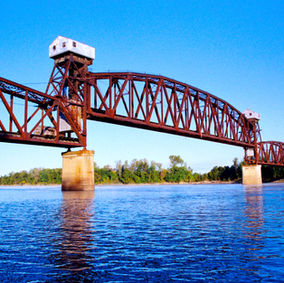

WELCOME!
This website has been newly expanded by volunteers from the Cooper County Historical Society, county residents, and volunteers from other historical groups from the Boonslick area. Our goal is to preserve as much of Cooper County’s early history as possible - online, in one place, for future generations to come!
Other Historical groups that have contributed to this website are: Friends of Historic Boonville, River, Rails & Trails Museum, South Howard County Historical Society, Boonslick Historical Society, Arrow Rock State Historic Site, and the Boonslick Road Association.
Each of these groups share the same goal of preserving the area’s history, but each has a different focus on what is collected – yet each group preserves several different areas of information. We complement each other’s historical research and resources beautifully.
Click here for more information about our volunteers and developers.
A FEW ICONIC MONUMENTS
Photos from the collections of Wayne Lammers and Edward Lang

THANK YOU, HANNAH COLE
Picture of the Hannah Cole statue
Prior to the coming of the Cole families, what would someday become Cooper County was explored by several early explorers starting with Charles Ravensway in 1658, Daniel Boone in 1799 and later Lewis and Clark in 1803-1804 after Missouri became a state. The area was already well known to fur traders.
Hannah Allison Cole must have been a very adventuresome, determined, courageous and hardy woman. She was a widow, and almost 50, when she crossed the Missouri River in something similar to a large canoe, called a “dugout” or “pirogue.” She was accompanied by her nine children, her beloved slave Lucy, her sister Phoebe, and Stephan, her husband, and their five children. That’s 18 people in a hollowed-out log, which was usually 15 to 18 feet long. The pirogue or dugout would usually be maneuvered through the water by men using long poles.
Although explorers and trappers visited what was to become Missouri in the 1600’s and later, the Coles were the first white families to settle on the South side of the Missouri River. When the family crossed the Missouri River, just before Christmas in 1810, the river was swift and full of ice. Evidently, the men made two trips across the river, the first to carry the women and children to their planned destination, plus swim their stock across the river. The second, to retrieve supplies and provisions that could not fit in the boat on the first trip across the river. That second trip also included dismantling their wagon and bringing it, and probably tools and seeds to the other side of the river.
However, the day after they made their initial trip across the river, there was an violent storm. Due to the raging river and ice, the men had to wait eleven days before they could retrieve their wagon and supplies. As the family probably had no little or food with them in the dugout, all they had to eat were acorns, slippery elm bark and one wild turkey. Due to the bad weather, game would have been hard to find, and since it was December, most of the acorns would be gone. That must have been very disheartening for the 18 members of the family. Yet, they all survived!
Hannah’s family constructed a small cabin near the river’s edge just up from where Boonville is located today. They lived peacefully for a year or so until there was an Indian uprising, encouraged by the British, known today as the War of 1812 (Yes, the same war when we fought the British and they burned Washington). By this time there were other hardy souls who had crossed the river for a new life in the newly opened territory.
Later, for protection, a fort was built on a rocky, very steep bluff that jutted out almost to the river. Looking at the property today, which is still very heavily wooded, you will wonder “how in the world, did they get up there,” as the location had to be reached by climbing through the dense, almost vertical virgin forest and then down a very steep forested hill.
Hannah must have been a very giving person who really loved people. During the Indian uprising she invited other families to stay in her fort, providing them a safe place to live. She eventually found teachers to provide education for the children, and preachers to provide hope and inspiration to everyone. The fort had many other uses after the War. Click here for more information.
By Barbara Dahl, Editor





